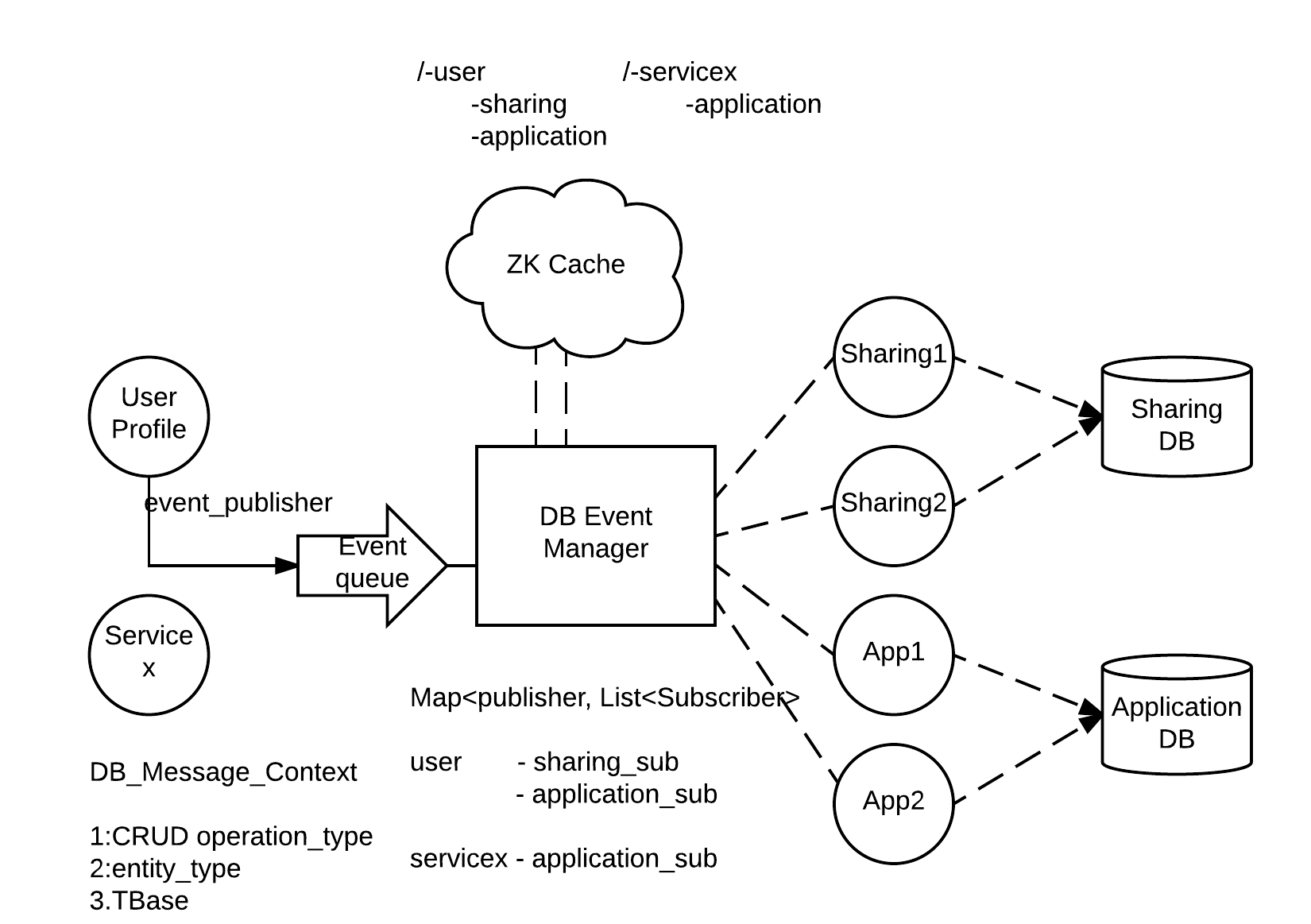Event Based Database Replication In Airavata
This is in continuation to the earlier blog. The proposed solution will be used to solve data replication problem in airavata. As a by-product of registry refactoring, user_profile and sharing module have been detached and qualified as independent microservices. The purpose of this context is to design event based data replication in aformentioned case. The goal is to design scalable, portable and managable event driven component to accomodate any new segregation on the fly.
First, we thought of having event communication logic in every microservice, but we soon ran into a problem of replication of same logic at every microservice. Also, if new service is interested in events from one service, we would need to change event publisher to accomodate new changes, which is unacceptable for a microservice.
The better way to handle these problems was to have centralized event manager which is responsible for maintaining publisher - subscriber map.

Let’s use the example illustrated in above figure to understand proposed design. Assume, when new user is added to the system, some of the user profile attribute need to be replicated in sharing and application service. User profile service publishes an event with operation type(CRUD), entity type and actual entity (TBase object). DB Event Manager processes event queue and acknowledges back to publisher, so user_profile service is now free to commit transaction. Now its event manager’s responsibility to deliver this event to interested services.
Whenever, new service is interested in event related to any entity, it simply shows its interest by sending message to event manager, event manager then adds this service in a local map against particular enitity.
DB event manager uses local map to identify corresponding subscribers, in this case sharing_sub and application_sub and sends user creation event to respective queues.
Now, the challenge here is to employ permanent caching logic to avoid loss of this mapping in case event manager crashes. We are using ZK as a permanent cache to store this mapping, so when event manager comes up it can restore mapping using ZK node state. When event manager alters local map correspoding changes are also replicated in ZK.
There can be multiple instances of a same service listening to a queue but only one would react to the message as we are using work queue model.
ZK creates a publisher entity node, any service which is interested in this entity will have node inside publisher entity. Here, user is a parent node (publisher entity) and all the nodes inside user are interested services(subscribers).
We are still debating about whether to use single event_queue which would take all the load of events or to complicate event manager by having queues for every event publisher. Each approach has its pros and cons, we are working through it and would come up with solution soon.
Gourav and I have started developement and will address challenges and implementation concerns in upcoming blogs.
Related JIRA